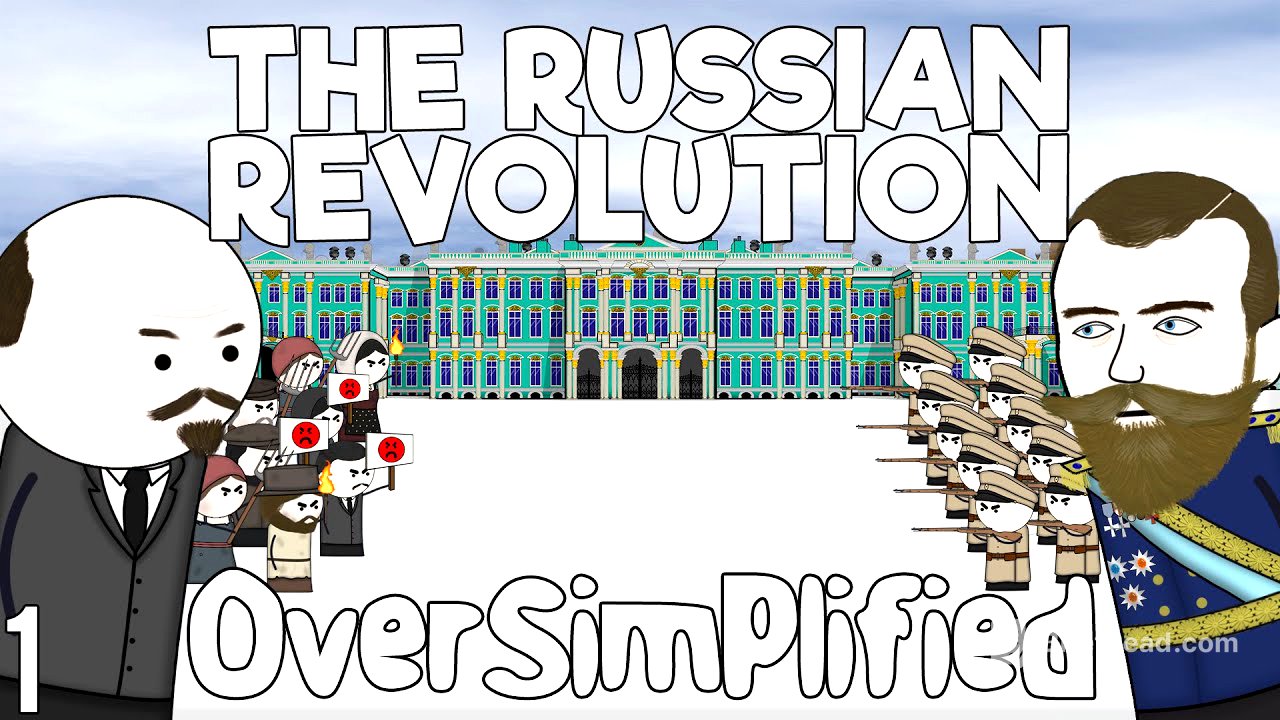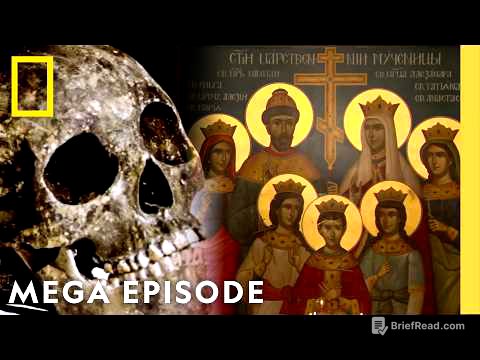TLDR;
This video by OverSimplified explores the tumultuous history of Russia in the 19th and early 20th centuries, focusing on the reigns of Tsars Alexander II, Alexander III, and Nicholas II. It covers key events such as the emancipation of the serfs, the rise of revolutionary ideologies like communism (with figures like Vladimir Lenin), the Russo-Japanese War, the 1905 Revolution, and the growing influence of Rasputin. The video highlights the Tsars' resistance to modernisation and reform, the increasing social unrest, and the eventual slide towards revolution.
- Russia's slow modernisation and the Tsars' autocratic rule created widespread discontent.
- Revolutionary ideas, particularly communism, gained traction among the populace.
- Key events like Bloody Sunday and the Russo-Japanese War intensified social unrest and weakened the Tsar's authority.
- The influence of controversial figures like Rasputin further damaged the Tsar's image.
Introduction: A Glimpse of 19th Century Europe [0:15]
The video opens with a humorous introduction to 19th-century Europe, contrasting the modern advancements in France, the United Kingdom, and Germany with the backwardness of Russia. While Western Europe was embracing industrialisation and reform, Russia remained stuck in a feudal system with an autocratic Tsar who ignored the needs of his people. This sets the stage for the exploration of Russia's internal struggles and its eventual descent into revolution.
Tsar Alexander II and the Emancipation of the Serfs [1:19]
Tsar Alexander II, recognising Russia's backwardness, attempts to reform the country by emancipating the serfs. However, this emancipation comes with a catch: the newly freed serfs are required to pay their former landlords an exorbitant amount of money over 49 years, leaving them in a state of perpetual debt and barely improving their lives. This half-hearted reform fails to satisfy the people and fuels further discontent, leading to Alexander II's assassination by revolutionaries.
Tsar Alexander III and the Repression of Minorities [3:41]
Following his father's assassination, Alexander III becomes Tsar and reverses many of his father's reforms. He implements a policy of repression, targeting religious and ethnic minorities and establishing the Okhrana, a secret police force, to suppress dissent. Alexander III's reign is characterised by strict control and the suppression of any opposition to the Tsarist regime.
Tsar Nicholas II: A Weak and Unprepared Ruler [4:22]
Nicholas II, described as timid and easily swayed, ascends to the throne after his father's death. Unprepared and uninterested in ruling, Nicholas is more concerned with personal matters than the affairs of state. His reign begins with a tragic coronation ceremony where a stampede results in the deaths of nearly 1,500 people, further tarnishing his image.
The Rise of Communism and Vladimir Lenin [6:12]
As discontent grows, revolutionary ideologies like communism begin to take hold in Russia. Vladimir Lenin, an intelligent but uncompromising figure, embraces Marxism and advocates for a class war to overthrow the Tsarist regime. He founds a communist newsletter and becomes involved in the socialist movement, eventually leading to a split in the party between the Bolsheviks (led by Lenin) and the Mensheviks.
Modernisation Efforts and Growing Worker Unrest [10:48]
Despite Nicholas II's disinterest, his advisors attempt to modernise Russia by borrowing money and establishing factories. However, this industrialisation leads to terrible working conditions, low wages, and long hours for the workers. The growing working class begins to strike, adding to the existing social unrest among peasants and liberals.
The Russo-Japanese War: A Humiliating Defeat [11:55]
Seeking to regain popularity, Nicholas II initiates the Russo-Japanese War, underestimating Japan's military capabilities. The war turns into a humiliating defeat for Russia, further damaging the Tsar's reputation and increasing public outrage.
Bloody Sunday and the 1905 Revolution [13:24]
In January 1905, a peaceful protest led by Father Gapon is met with violence when imperial soldiers open fire on the crowd, killing hundreds. This event, known as Bloody Sunday, sparks the 1905 Revolution, with strikes and uprisings erupting across the empire. Workers, liberals, and peasants all demand change, pushing Russia to the brink of collapse.
The October Manifesto and the Suppression of the Revolution [15:22]
To quell the revolution, Nicholas II issues the October Manifesto, promising an elected assembly called the Duma. While this satisfies the liberals, the Tsar quickly reneges on his promises, reasserting his autocratic power and suppressing the remaining revolutionary movements. Lenin, in exile, watches as the revolution fails due to disorganisation and the Tsar's manipulation.
Stolypin's Reforms and Repression [17:12]
Following the failed revolution, Tsar's new top man, Pyotr Stolypin, implements a combination of reforms and repression to stabilise the country. While some positive economic reforms are made, Stolypin also cracks down on revolutionaries, executing thousands and earning the nickname "Stolypin's necktie."
The Rise of Stalin and the Influence of Rasputin [17:58]
During this period, Lenin meets Joseph Stalin, a ruthless and effective fundraiser for the Bolsheviks. Meanwhile, the Tsar falls under the influence of Grigori Rasputin, a controversial mystic with a scandalous reputation. Rasputin's presence in the royal court further damages the Tsar's image and fuels public discontent.
The Inevitable Slide Towards World War I [20:39]
As Russia teeters on the edge of revolution, the outbreak of World War I in 1914 sets the stage for even greater turmoil and ultimately leads to the downfall of the Tsarist regime.









